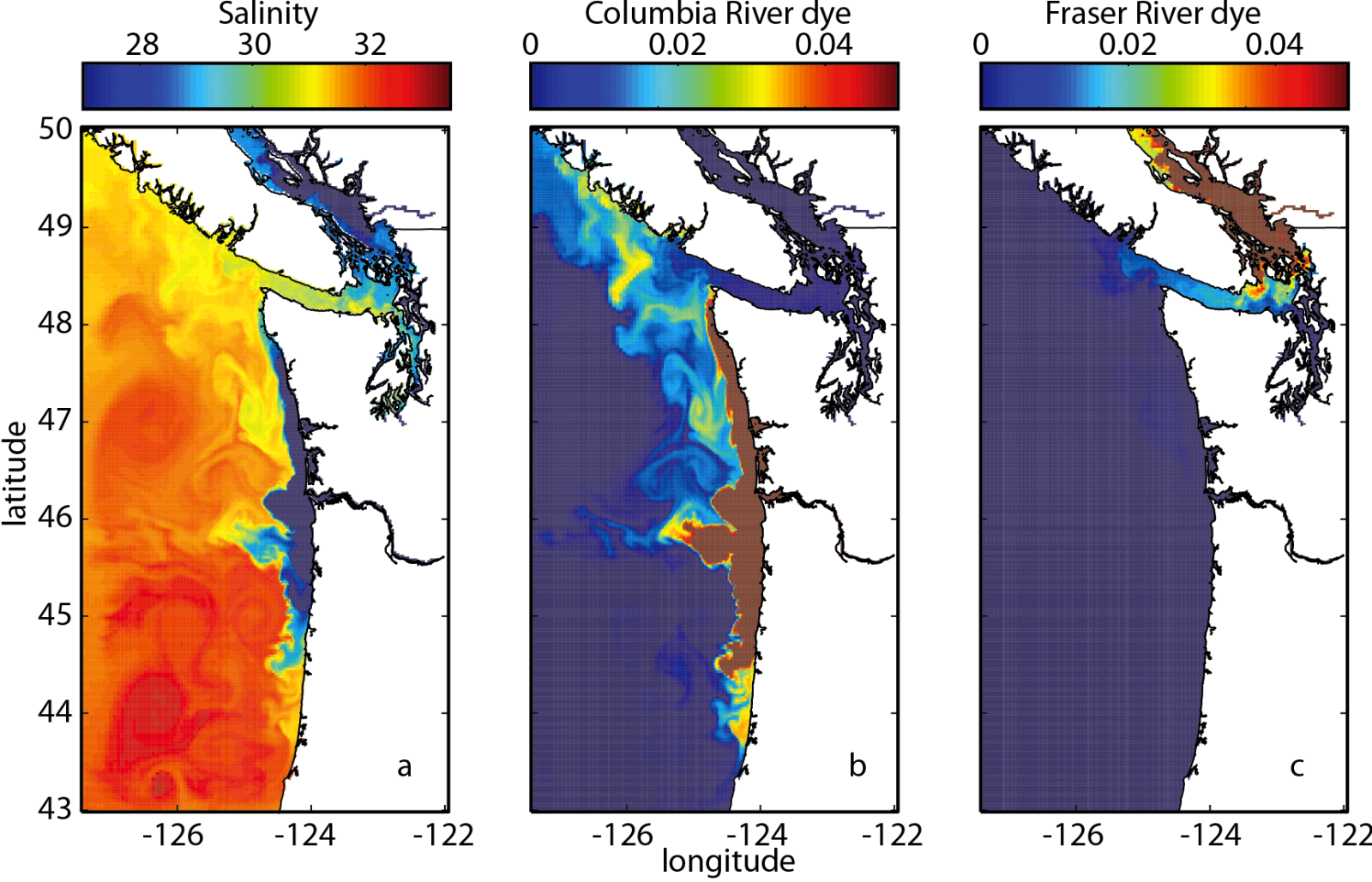transport of harmful algal blooms to the coast
coastal/estuarine interactions
coastal/deep ocean interactions
Giddings’ postdoctoral research focused on transport processes in the coastal ocean, particularly processes that influence transport of harmful algal blooms to the coast. These include processes such as wind driven upwelling and downwelling, and coastal plume interactions. While investigating these transport processes Giddings became interested in coastal/estuarine interactions which she pursued further in an NSF Ocean Science Postdoctoral Research Fellowship beginning January 2013. Coastal/estuarine interactions remain an active area of research for the group. This work ranges across multiple scales from looking at the connections between small plumes and the nearshore, estuaries and upwelling coastal regions, the impact of river plumes on shelf transport, and the impact of deep ocean circulation on coastal processes and connectivity.

(a) Modelled surface salinity in the Pacific Northwest during a transition between upwelling to downwelling favorable winds leading to a bi-directional Columbia River plume. Passive dye tracers allow us to separate the influence of the various freshwater sources to investigate coastal/estuarine interactions in greater detail. The right plots show the passive dye tracer surface concentration for dye released from the Columbia river (b) and Fraser River (c) mouths at an initial concentration of 1.
